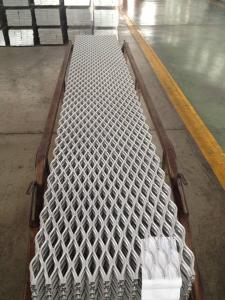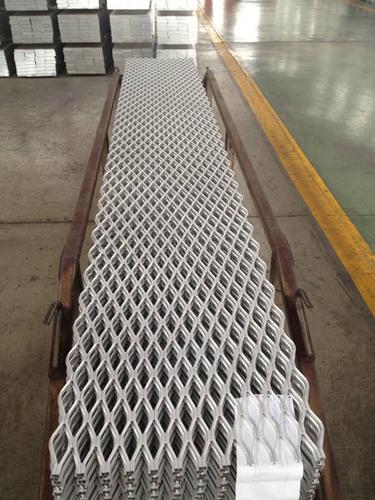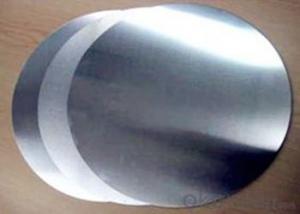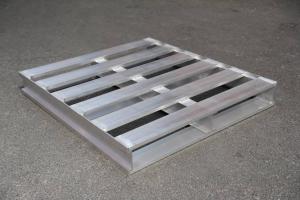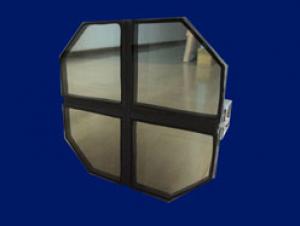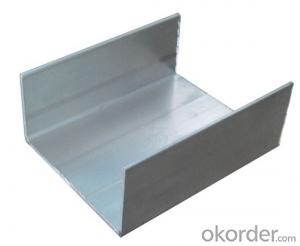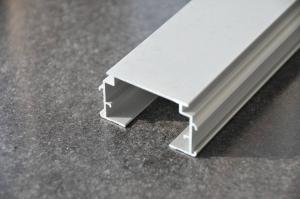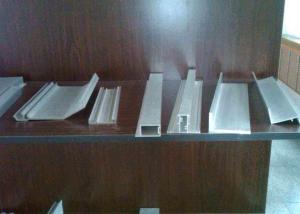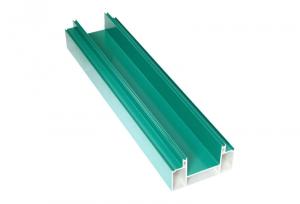Hot Sale Aluminum Walkway Extrusion Profiles C Channel
OKorder Service Pledge
OKorder Financial Service
You Might Also Like
Hot Sale Aluminium Walkway
Alloy: 6xxx
Applications: Safety grating, stair tread, walkway, cat-way, flooring
Standard package: suitable for long ocean transporting
OEM&ODM is welcome
Life Time:Last for life time
Diamond openings are complete with radiused corners at the saddle and side channel location
Specifications
1) Thickness:3.0mm
2) SWDxLWD:25x50mm
3) Competitive Price
Others:
Material: aluminum plate
Hole shape: diamond,hexagonal..
Pattern: Standard - raised surface aluminum expanded metal mesh, Flattended aluminum expanded metal mesh
Packing: moist-proof paper/pallet -wooden cases or wooden pallets or iron pallets
Surface treatment:powder coating,pvc coated, anodizing(oxidation)
Characteristic: The aluminum expanded metal mesh are made by the aluminum plate,widely used in the civil buildingand sound abatment material inthe hall,meeting rooms,walkway mesh.And the aluminum expanded metal meshs surface can be powder coating or PVC coated ,ex.:white,red, green etc.this is a good material for the decoration,it's very beautiful used for the housetop or walkway.
- Q: Can aluminum profiles be used in the production of agricultural equipment?
- Yes, aluminum profiles can be used in the production of agricultural equipment. Aluminum is a versatile and lightweight material that offers several advantages for agricultural applications. It is corrosion-resistant, which is essential for equipment exposed to outdoor conditions and various chemicals used in farming. Additionally, aluminum profiles can be easily shaped and customized to fit specific design requirements, allowing for the creation of complex and functional agricultural equipment. The lightweight nature of aluminum also makes it easier to transport and handle the equipment, reducing labor costs. Moreover, aluminum profiles are recyclable, making them an environmentally friendly choice for agricultural equipment production. Overall, utilizing aluminum profiles in agricultural equipment can enhance durability, efficiency, and sustainability in the farming industry.
- Q: Are aluminum profiles suitable for use in food processing environments?
- Aluminum profiles are well-suited for application in food processing environments. The food industry widely utilizes aluminum due to its exceptional properties. Its lightweight, durable, and corrosion-resistant nature makes it an ideal material for use in food processing, where cleanliness and hygiene are paramount. Cleaning and sanitizing aluminum profiles is a breeze, which is crucial for preventing contamination and ensuring food safety. Their smooth and non-porous surface inhibits bacterial growth and simplifies maintenance. Moreover, aluminum boasts excellent thermal conductivity, enabling efficient heat transfer and temperature control during food processing. This characteristic proves particularly valuable in food packaging, cooking, and chilling applications. In addition to its physical attributes, aluminum is non-toxic and does not react with food or beverages. As an inert material, it does not release any harmful substances that could contaminate the processed food. Overall, aluminum profiles are a reliable and suitable choice for food processing environments. They meet the industry's stringent requirements for hygiene, durability, and safety, making them a popular option in the food processing and packaging sectors.
- Q: Can aluminum profiles be used for window frames?
- Yes, aluminum profiles can be used for window frames. Aluminum is a popular material choice for window frames due to its durability, strength, and resistance to corrosion. It is lightweight, easy to shape, and can withstand various weather conditions, making it a suitable option for window frames. Additionally, aluminum profiles can be customized to fit different window sizes and designs, making them a versatile choice.
- Q: What is the difference between 6063-T5 and 6061-T6 aluminum profiles?
- T6 treatment of aluminum alloy is solid solution treatment and artificial aging treatment. Aluminum alloy with different components can be treated with T6 as the solution is treated by heat treatment. However, the specific technological parameters vary according to the composition, such as solid solution temperature and aging temperature. 6061 of the T6 process is: solid solution treatment temperature of 530 degrees, artificial aging to make T6, the state is plate 160 degrees, bar and 80 thickness above plate 175 degrees.
- Q: What are the different packaging options available for aluminum profiles?
- There are several packaging options available for aluminum profiles, including individual poly bags, cardboard tubes, wooden crates, or pallets. These options ensure the protection and safe transportation of the aluminum profiles.
- Q: Are aluminum profiles capable of being tailored to fit unique design specifications?
- <p>Yes, aluminum profiles can be customized to meet specific design requirements. This customization includes altering dimensions, surface treatments, and shapes to fit the needs of various applications. Manufacturers can cut, bend, and machine aluminum profiles to precise specifications, allowing for a high degree of flexibility in design and functionality. Customization is often possible through processes like extrusion, which allows for the creation of complex profiles that can be tailored to exacting standards.</p>
- Q: Can aluminum profiles be used for shelving systems?
- Yes, aluminum profiles can be used for shelving systems. Aluminum profiles are lightweight, durable, and have a high strength-to-weight ratio, making them suitable for supporting shelving units. Additionally, aluminum profiles can be easily customized and offer a sleek and modern aesthetic for shelving systems.
- Q: Are aluminum profiles compatible with other materials for construction purposes?
- <p>Yes, aluminum profiles can be used in combination with other materials in construction. They are often paired with steel, glass, and various plastics due to their lightweight, durability, and corrosion resistance. Aluminum's ability to be easily joined and its compatibility with different finishes make it a versatile choice for construction projects.</p>
- Q: Are aluminum profiles suitable for use in aerospace structural components?
- Yes, aluminum profiles are suitable for use in aerospace structural components. Aluminum is a lightweight and corrosion-resistant material that offers a high strength-to-weight ratio, making it ideal for applications in the aerospace industry. It is widely used in the construction of aircraft frames, wings, and other structural components due to its durability and ability to withstand high stress and forces during flight.
- Q: What are the different bending machines or tools used for aluminum profiles?
- Aluminum profiles can be shaped and angled using various bending machines and tools. These tools are designed to meet specific project requirements, manipulating the profiles in different ways. 1. For smaller aluminum profiles, the Manual Tube Bender is a hand-operated bending tool. It consists of a lever and a bending shoe, allowing for manual bending of the profile. 2. When dealing with larger and thicker aluminum profiles, the Hydraulic Tube Bender is equipped with hydraulic power. This machine offers greater precision and control, making it ideal for industrial applications. 3. The CNC Tube Bending Machine is a computer-controlled machine that combines hydraulic power and computer programming. With this machine, aluminum profiles can be accurately bent, making it suitable for high-volume production and intricate designs. 4. The Roll Bending Machine is specifically designed for bending aluminum profiles into curved shapes. It uses three rolls, with the profile passing through the middle roll while the other two rolls apply pressure to achieve the desired curve. 5. To bend aluminum profiles without deforming or collapsing the inner diameter, the Mandrel Bender is used. This tool utilizes a mandrel inserted into the profile to support the inner wall during the bending process. 6. The Rotary Draw Bender is a machine that produces accurate and repeatable bends in aluminum profiles. It uses bending dies and a rotating arm, commonly used for tubes and pipes, but can also be adapted for aluminum profiles. These bending machines and tools offer various levels of precision, control, and production capacity. Manufacturers and fabricators can select the most suitable option based on their specific needs and requirements.
Send your message to us
Hot Sale Aluminum Walkway Extrusion Profiles C Channel
OKorder Service Pledge
OKorder Financial Service
Similar products
Hot products
Hot Searches
Related keywords
